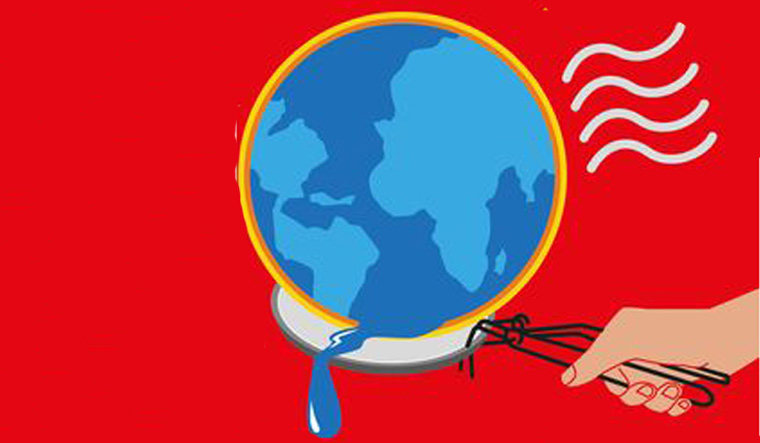Climate change could expose up to 2.2 billion people residing in India's Indus Valley and Pakistan to dangerously high levels of heat by the end of the century, says a new study. The research, conducted by experts from Penn State College of Health and Human Development, Purdue University College of Sciences, and Purdue Institute for a Sustainable Future, warns that if global temperatures rise by 1 degree Celsius or more, vast populations will face heat and humidity so extreme that their bodies will struggle to cool naturally.
The study, published in the Proceedings of the National Academy of Sciences (PNAS), highlights that as temperatures continue to soar worldwide, the limits of human tolerance for heat and humidity will be surpassed, leading to severe health problems such as heat stroke and heart attacks. Since the industrial revolution, global temperatures have already increased by approximately 1 degree Celsius. In response, 196 nations signed the Paris Agreement in 2015, aiming to limit temperature increases to 1.5 degrees Celsius above pre-industrial levels.
To assess the areas where warming would exceed human limits, the researchers modeled temperature increases ranging from 1.5 degrees Celsius to 4 degrees Celsius, representing a worst-case scenario. Their results indicate that if global temperatures rise by 2 degrees Celsius, the 2.2 billion inhabitants of the Indus River Valley in Pakistan and India, along with one billion individuals in eastern China and 800 million people in sub-Saharan Africa, will face annual periods of intense heat surpassing human tolerance. These regions are predominantly located in lower-to-middle income nations, leaving many affected individuals without access to air conditioning or effective means to mitigate the negative health impacts of extreme heat.
Should the planet continue to warm to 3 degrees Celsius above pre-industrial levels, the study suggests that the Eastern Seaboard and central regions of the United States, spanning from Florida to New York and Houston to Chicago, would also experience heat and humidity levels beyond human tolerance. Similarly, South America and Australia would face extreme heat under this level of warming.
While the United States may not experience heatwaves that surpass human limits as frequently as other regions, the researchers caution that current predictions do not account for the most extreme weather events. The study's lead author, Daniel Vecellio, stresses that models like these can predict trends but often fail to anticipate specific events, such as the deadly 2021 heatwave in Oregon or London's record-breaking 40-degree Celsius temperature last summer, both of which occurred within acceptable human tolerance limits. As temperatures continue to rise, the researchers warn of a future where crops fail, necessitating mass migration as regions become uninhabitable.
The findings of this study highlight the urgent need for global action to combat climate change and protect vulnerable populations from the detrimental effects of extreme heat. Without immediate and coordinated efforts to reduce greenhouse gas emissions and adapt to a changing climate, the consequences for billions of people worldwide could be dire.


